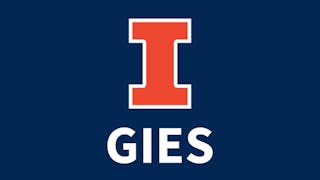Accounting is the language of business. You should be able to explain the top 30 concepts to your cousin in a way they understand it.



Mastering Business Essentials: Accounting
This course is part of MBE Mastering Business Essentials Specialization

Instructor: John Kim
Included with 
Recommended experience
What you'll learn
Learn how to speak the language of business (accounting). Learn the financial statements so you can hold a business conversation with anyone.
Skills you'll gain
Details to know

Add to your LinkedIn profile
April 2025
2 assignments
See how employees at top companies are mastering in-demand skills

Build your subject-matter expertise
- Learn new concepts from industry experts
- Gain a foundational understanding of a subject or tool
- Develop job-relevant skills with hands-on projects
- Earn a shareable career certificate

There are 5 modules in this course
Accounting is the universally accepted language of business. It allows managers, investors, creditors - everyone - to have a unified, and commonly accepted way to analyze the business. It's like a superhero with x-ray vision to see the insides of a company's business. It helps to answer questions like: How much did we sell? Are we profitable? Who owns the business? How much debt do we have? Do we have enough cash to pay our bills?
What's included
4 videos1 reading
The income statement (starting with revenues) is like a waterfall, where you take out different expenses until you get to the "bottom line" of net profits. Your ability to do this simply and develop personal intuition about the different types of margin (gross, operating, net) will immediately differentiate you from most people. Let's use the example of a pen company to dig into what's driving costs and profitability.
What's included
3 videos1 reading1 assignment
The balance sheet is a financial snapshot of the ownership of a business. Namely, how much of it do you own (equity) and how much it was borrowed from other people with debt (liabilities). The main formula to remember is A = L + E. Assets (what you have) = Liabilities (what you owe) + Equity (what you own). This is a super powerful way to answer questions like a) What's our ability to pay our bills? b) How much debt do we have? c) How much inventory do we have?
What's included
3 videos2 readings
Debt is a powerful tool in business that is sometimes misunderstood. 1) Debt can be good if you can borrow funds responsibly, make a good return on it, pay back the interest, and grow the business faster than if you didn't have debt. 2) Debt can be bad if you borrow beyond your ability to repay it, so that you are stuck in a cycle of debt. (e.g., keeping credit card balance and paying 20%+ annually) This same dynamic "debt can be good or bad" applies to student loan debt and government public debt.
What's included
1 video2 readings
Cash flow statement is the 3rd financial statement. The cashflow statement shows how money comes in/out of a company through operations, financing (raising money), and investing (getting a return on their investments). Often it only gets attention when a company is in crisis or is having trouble paying their bills. Return on investment (ROI) is a common and useful tool in business. If I invest X, and get Y, how much of a ROI did I get? Of course, it gets very complicated quickly because of the addition question: a) how accurate is that forecast b) what's your risk tolerance? c) what's the time frame d) what are the alternatives?
What's included
3 videos1 reading1 assignment1 peer review
Earn a career certificate
Add this credential to your LinkedIn profile, resume, or CV. Share it on social media and in your performance review.
Instructor

Offered by
Explore more from Business Essentials
 Status: Free Trial
Status: Free TrialUniversity of Illinois Urbana-Champaign
 Status: Free Trial
Status: Free TrialCorporate Finance Institute
 Status: Free Trial
Status: Free TrialIESE Business School
 Status: Preview
Status: PreviewPolitecnico di Milano
Why people choose Coursera for their career





Open new doors with Coursera Plus
Unlimited access to 10,000+ world-class courses, hands-on projects, and job-ready certificate programs - all included in your subscription
Advance your career with an online degree
Earn a degree from world-class universities - 100% online
Join over 3,400 global companies that choose Coursera for Business
Upskill your employees to excel in the digital economy
Frequently asked questions
Accounting is the global language of business. This is what enables global trade, mergers & acquisitions, fiduciary responsibility, and investor confidence. Accounting has a rich history and there are many levels of expertise.
Do you need to become a CPA-level expert with detailed practitioner-level knowledge of debits and credits? No.
Do you need to know the difference between COGS and SG&A? Yes.
If accounting has 10 levels of understanding, this will easily cover the essentials for you.
John Kim, is an associate professor in the practice, at Emory University. He is a management consultant by experience and passion. He's been teaching strategy, healthcare, and consulting since 2017.
He has a Management Consulting specialization here with 1,300+ reviews with a weighted average 4.9 star rating here.
His teaching style is interactive - yes, even with online videos - and wants you to succeed. See his teaching philosophy here.
Access to lectures and assignments depends on your type of enrollment. If you take a course in audit mode, you will be able to see most course materials for free. To access graded assignments and to earn a Certificate, you will need to purchase the Certificate experience, during or after your audit. If you don't see the audit option:
The course may not offer an audit option. You can try a Free Trial instead, or apply for Financial Aid.
The course may offer 'Full Course, No Certificate' instead. This option lets you see all course materials, submit required assessments, and get a final grade. This also means that you will not be able to purchase a Certificate experience.
More questions
Financial aid available,

